Memory and Reclamation
/https://dev6.siu.edu//search-results.php
Last Updated: Oct 18, 2023, 03:23 PM
Africanisms and re-interpretation of African cultural norms are an integral part of African American culture, but because it is American, African American culture is therefore by default Western culture. If Maurice de Vlaminck, Andre Derain, Pablo Picasso, and Amedeo Modigliani, to name just four European artists, reacted to African sculpture pieces brought to Europe during the colonial era and used them stylistically in their works, Edna Patterson-Petty grew up in Western culture, deals with it and reacts to it daily and has her feet planted firmly in Africana culture. Patterson-Petty, like other artists in the African Diaspora, adapts and adopts some aspects of Western culture, similar to what Africans on the continent do as a result of colonial contact and impositions of the West, without giving up any bit of her identity. An identity that is not based on an identity/alterity dichotomy pointing to “what others are lacking,” thus, negating their culture and humanity (Voerstermans 1991, 233). It is not based on what Paul Arnett sees as:
. . . the desire to establish sharply differentiated characteristics between a (powerful) speaker-subject’s self and observe qualities projected on the (powerless) object such as another race, gender, social class, religious group, nationality, sexual orientation, or mixtures of these” (Arnett, 2000).
It is an identity woven with yarns of Africana ethos bathed in virtues of African and African American ethics. These are teleological, in that they are determined by the ultimate goal of all African peoples, which is preservation and promotion of community (Paris 1995, 134).
An excerpt of “Heritage” reads:
What is Africa to me:
Copper sun or scarlet sea,
Jungle star or jungle track,
Strong bronzed men, or regal black
Women from whose loins I sprang
When the birds of Eden sang?
One three centuries removed
From the scenes his fathers loved,
Spicy grove, cinnamon tree
What is Africa to me? (24)
Memory and Reclamation
Yoruba Terra Cotta Head
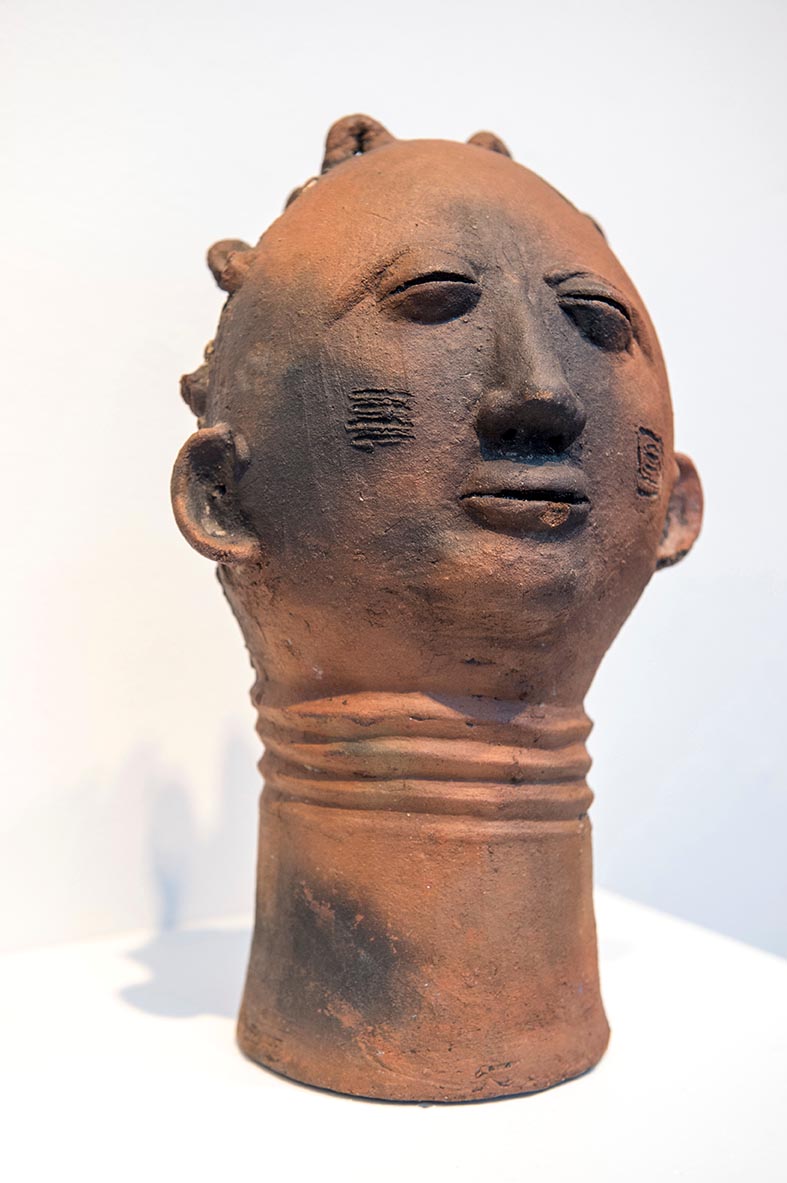
(Photo: Rusty Bailey)
Yoruba Terra Cotta Head
C20th. Terra Cotta.
13 x 6 x 7 inches.
Reginald Petty African Art Collection.
Fafra Goje
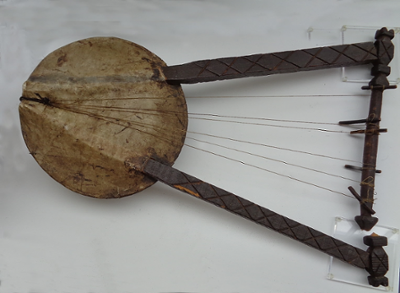
(Photo: Leonard Gadzekpo)
Fafra Goje
C20th. Goat skin, calabash, wood, and fiber strings.
14 x 6 x 28 inches.
Reginald Petty African Art Collection.
Five African Musical Instruments

(Photo: Leonard Gadzekpo)
Five African Musical Instruments
(Ewe Xatse, Two Fafra Gojes, Benin Drum, and Cameroonian Box String Musical instrument)
Reginald Petty African Art Collection.
Cameroonian Box String Instrument
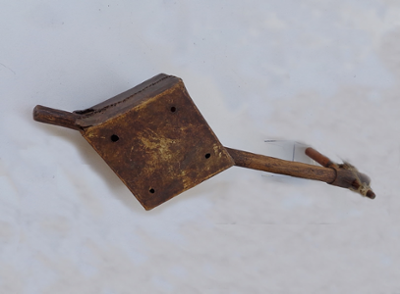
(Photo: Leonard Gadzekpo)
Cameroonian Box String Instrument
C20th. Wood, leather, and fiber.
8 x 11 x 25.5 inches.
Reginald Petty African Art Collection.
Ewe Xatse (Rattle)
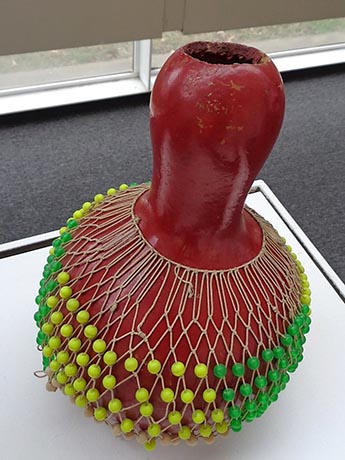
(Photo: Leonard Gadzekpo)
Ewe Xatse (Rattle)
C20th. gourd, woven fiber strings and beads.
8 x 8 x 14 inches.
Reginald Petty African Art Collection.
Mossi Goat-skin Drum

(Photo: Leonard Gadzekpo)
Mossi Goat-skin DrumC20th. Wood, Leather, and Fiber.
10 x 10 x 62 inches.
Reginald Petty African Art Collection.
Eugenia Alexander
Under the gaze of African art pieces her husband collected that fill their residence, slivers of African performance tradition the Igbo term nka, Edna J. Patterson-Petty gazes back, ashe, the inner creative force in artistic conversation with memory and spirit of Africana. Some of her sculpture pieces are drawn directly from African art pieces. Improvisation in materials and techniques in her creations produce re-interpretations that speak to adaptive aspects of Africana culture which sustain the people and retain cultural memory. Styrofoam is far lighter than bronze, just as fabric is less durable than metal. But by immersing fabric in epoxy-resin or plaster, a varying degree of permanence may be achieved, while the flexible nature of an enhanced material lends itself to manipulation. Thusly, in Patterson-Petty’s creative hands the material becomes a tool adapted and adopted for cultural re-interpretation. Just as she transformed a guitar, Eugenia Alexander, into a work of art, she created Re-contextualized Chiwara Antelope Headdress from a damaged Chiwara Antelope Headdress from her husband Reginald Petty’s African Art Collection. She captured in the multi-media sculpture piece importance of Africana memory: the past and the present for the future.
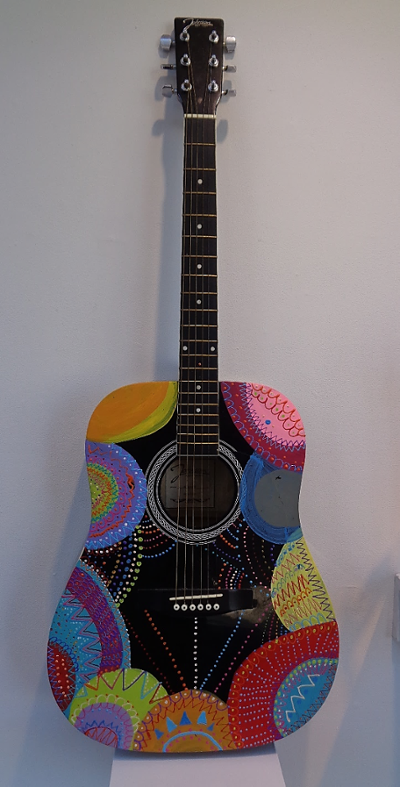
Photo: Leonard Gadzekpo)
Edna Patterson-Petty, Eugenia Alexander, Painted Guitar
2020. Wood, metal, and paint.
38 x 14 x 4 inches.
Quilts and Re-contextualized Chiwara headdress by Edna Patterson-Petty and Nuna and Bambara Masks
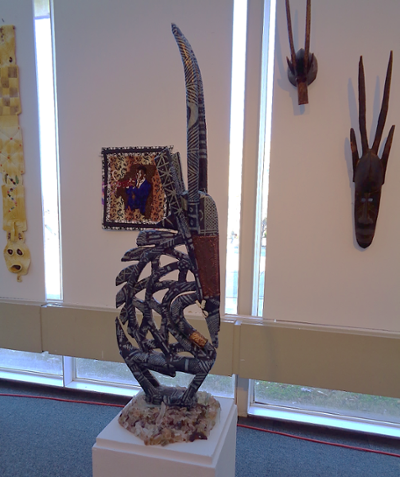
(Photo: Leonard Gadzekpo)
Quilts and Re-contextualized Chiwara headdress by Edna Patterson-Petty and Nuna and Bambara Masks
Recontextualized Chiwara Headdress
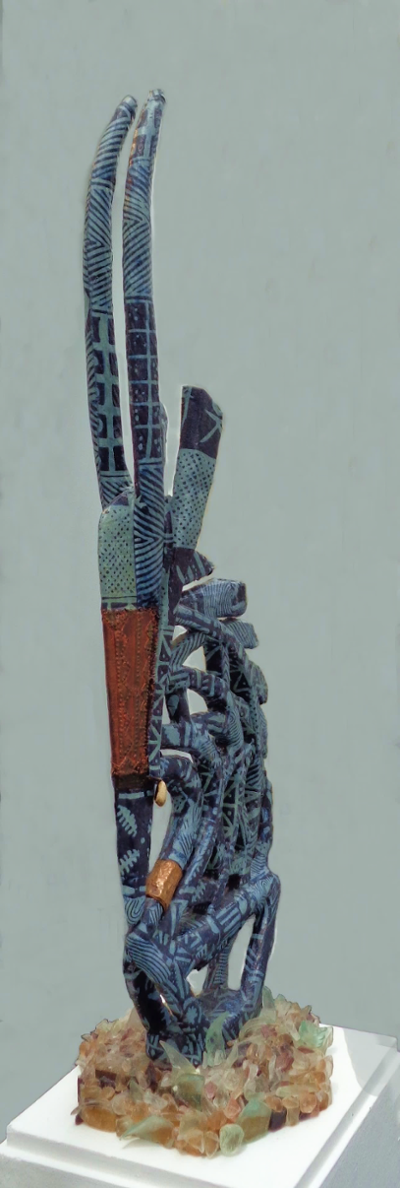
(Photo: Leonard Gadzekpo)
Edna Patterson-Petty, Recontextualized Chiwara Headdress.
2020. Mixed Media.
39.5 x 14 x 12 inches.
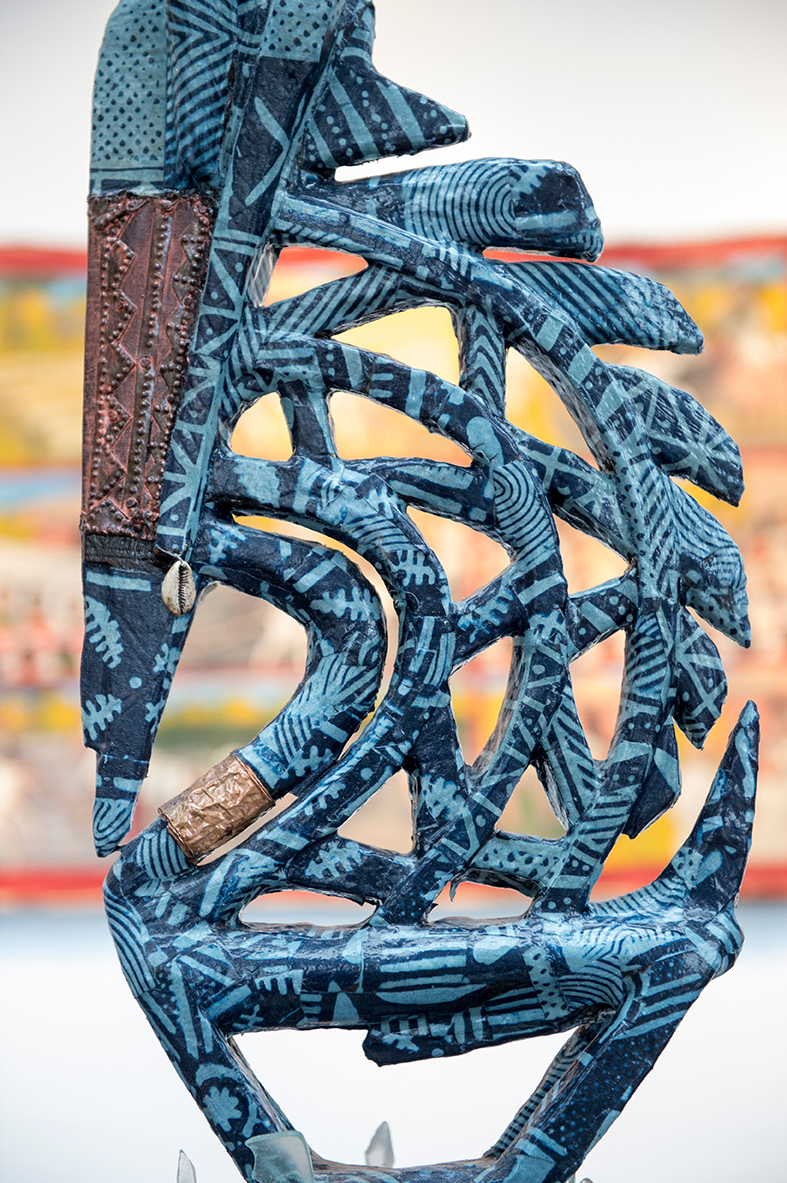
(Photo: Russel Bailey)
Edna Patterson-Petty, Recontextualized Chiwara Headdress.
(Detail)